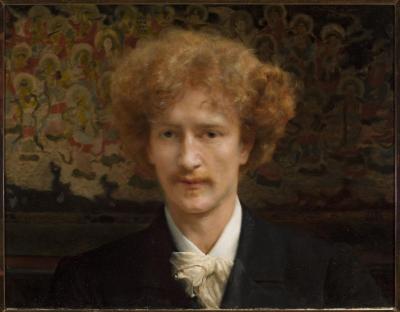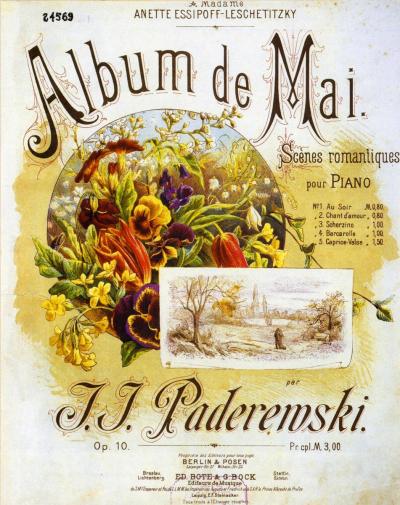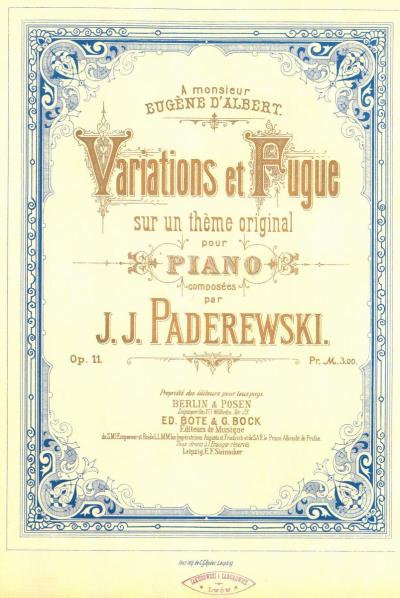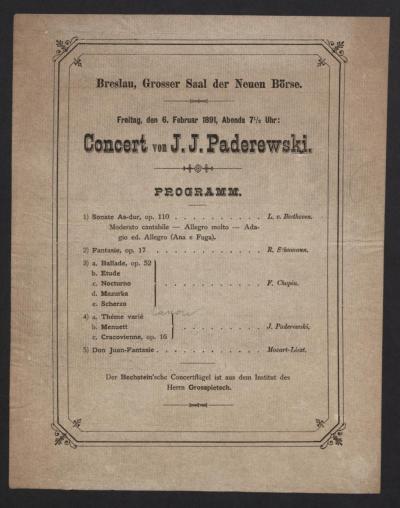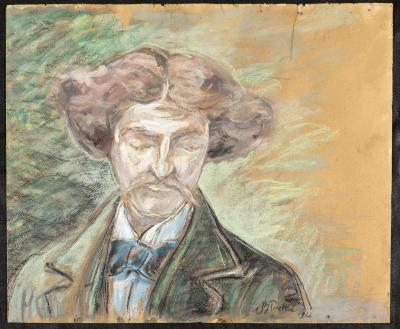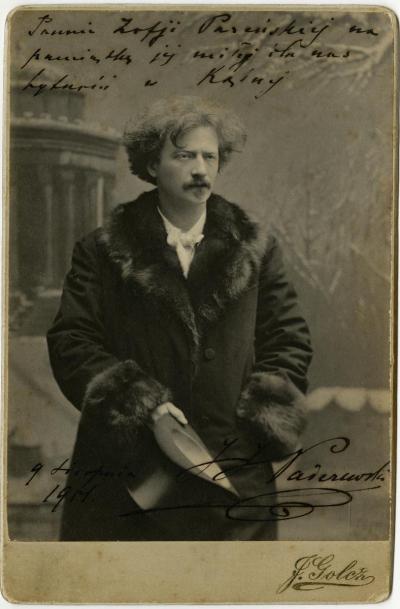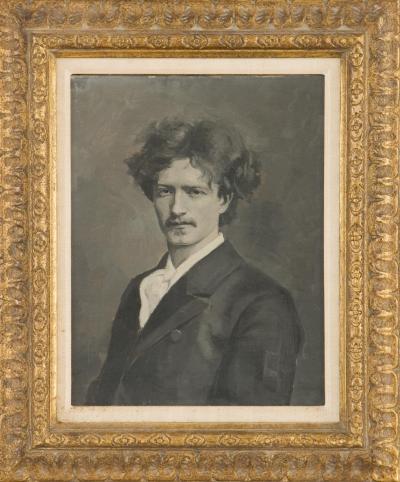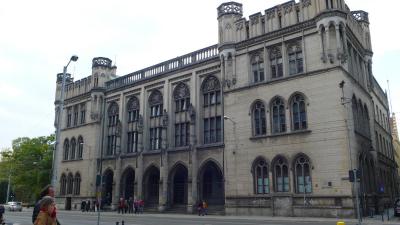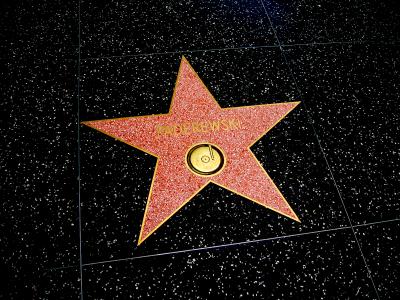Paderewski in Breslau
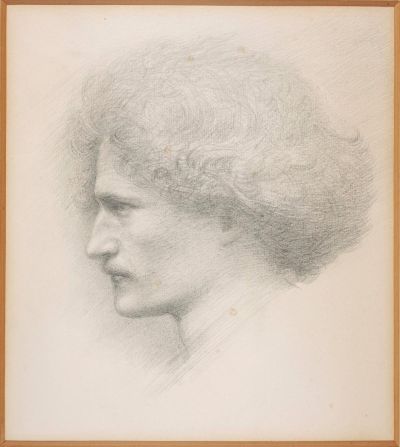
In the same year Paderewski undertook his first tour of Great Britain. At first English audiences reacted with cool reserve but in the end they were bewitched by his temperamental recitals.[7]
Queen Victoria herself invited him to give a special recital at Windsor Castle where she was enchanted by the power and depth of his artistic expression.[8]
In London Paderewski also aroused great interest because of his extraordinary appearance, a slender pale faced figure surrounded by a brilliant red bush of hair. Adam Zamoyski rightly remarked “(…) Given the colour of his hair, his head was something that the so-called Pre-Raphaelite artists could only dream about”.[9] Here we might add a statement attributed to Edward Burne-Jones (1833-1898) after his meeting with Paderewski: “a certain young man by the name of Paderewski is currently staying in London. I would love to have such a face and look like he does (…)”. [10] The pianist Harold Bauer was also entranced by Paderewski’s features: “I saw his head when he appeared on the stage of St. James Hall and I shall never forget it”.[11]
Paderewski’s idiosyncratic appearance made him an ideal model for many contemporary painters. Burne-Jones, for example, made a pencil drawing of the pianist’s head[12], whereas Lawrence Alma-Tadema (1836-1912) completed a well-known oil painting of the artist that has gone down in art history.[13] Paderewski recalled this painting in the diaries he dictated: “(…) Alma-Tadema’s portrait is a true masterpiece from the point of view of art”.[14] The painter placed the artist against a background consisting of two coloured areas, an orange and yellow textile wallpaper and a dark olive-green wall panelling. The tonality of the painting is based on the highly contrasting composition of the colours, with its very clear distinction between light and dark. His pale face and white shirt contrasts strongly with his dark dress coat. The transition is lessened by the blurred contours. This wonderful academic portrait is one of a cycle of famous Victorian and Edwardian musicians painted by Alma-Tadema.[15] Today it can be found in the collections of the National Museum in Warsaw/Muzeum Narodowe w Warszawie.
It should also be mentioned that Paderewski and Alma-Tadema were great friends. The artist was invited to take part in the festivities in Lviv that marked the 100th birthday of Frédéric Chopin in October 1910, during which the first meeting of Polish musicians also took place.[16]
[7] The “Gazeta Lwowska” (Nr. 121, 30.05.1894) published an anecdote entitled "Paderewski i angielska „lady” [Paderewski and the English "Lady"], ostensibly about Paderewski's success with women during his visit to the British Isles. I quote from the complete text: "The outstanding pianist must have had to put up with many wearisome encounters with frantic women from the top echelons of London society. Shy, with downcast eyes, the sight of Paderewski playing must have sent the slender English ladies into ecstasy and killed him with their outbreaks of emotion. The passionate daughters of Albion give the poor artist no peace, magnetised him with their gaze, electrified him with the pressure from their long fingered hands. As a London newspaper reports, a few days ago Paderewski played in one of the major art salons. Suddenly a certain woman approached the grand piano, snatched one of the artist’s hands and pressed a kiss on it. The artist tore his hand away from hers and in doing so he unintentionally touched her face. She imagined he had tried to box her ears and fainted. It was only later that the situation was cleared up and those present quietened down".
[8] W. Dulęba, Z. Sokołowska, Ignacy Jan Paderewski. Mała kronika życia pianisty i kompozytora, Kraków 1960, p. 56.
[9] A. Zamoyski, Paderewski, Warszawa 2010, p. 62.
[10] Zamoyski, op. cit., p. 62.
[11] Zamoyski, op. cit., p. 61.
[12] D. Walawender-Musz (ed.), Śladami prerafaelitów. Artyści polscy i sztuka brytyjska na przełomie XIX i XX w., [Ausstellungskatalog], Muzeum Pałac w Wilanowie, Warszawa 2006, p. 32.
[13] R. Ash, Sir Lawrence Alma- Tadema, London 1995, [p. 4].
[14] I. J. Paderewski, Pamiętniki, transcribed by M. Lawton, Kraków 1972, vol. 1, p. 238.
[15] I. Danielewicz (ed.), Akademizm w XIX w. Sztuka europejska ze zbiorów Muzeum Narodowego w Warszawie i innych kolekcji polskich, [Exhibition catalogue], Muzeum Narodowe w Warszawie, Warszawa 1998, p. 46.
[16] “Kurjer Lwowski”, Nr. 493, 24.10.1910.
